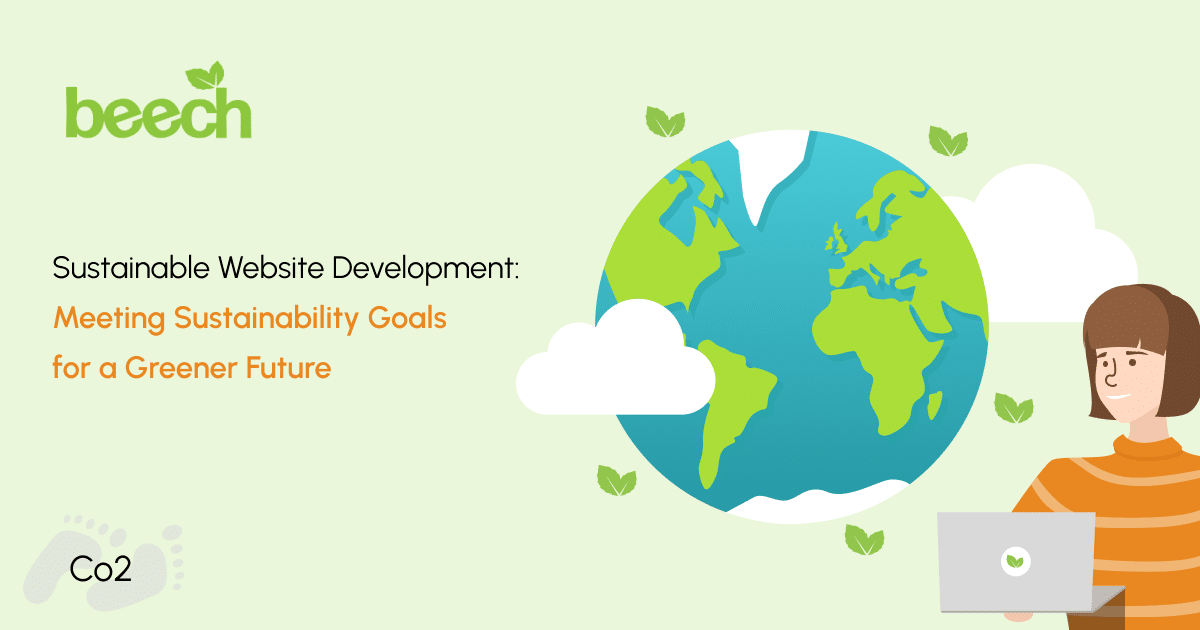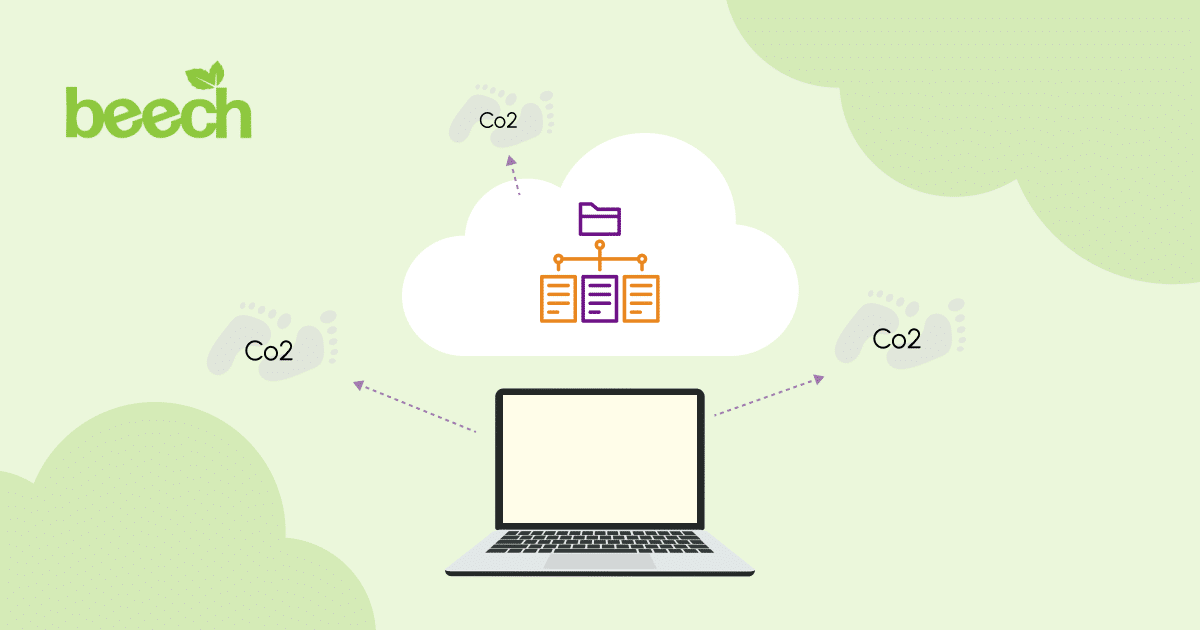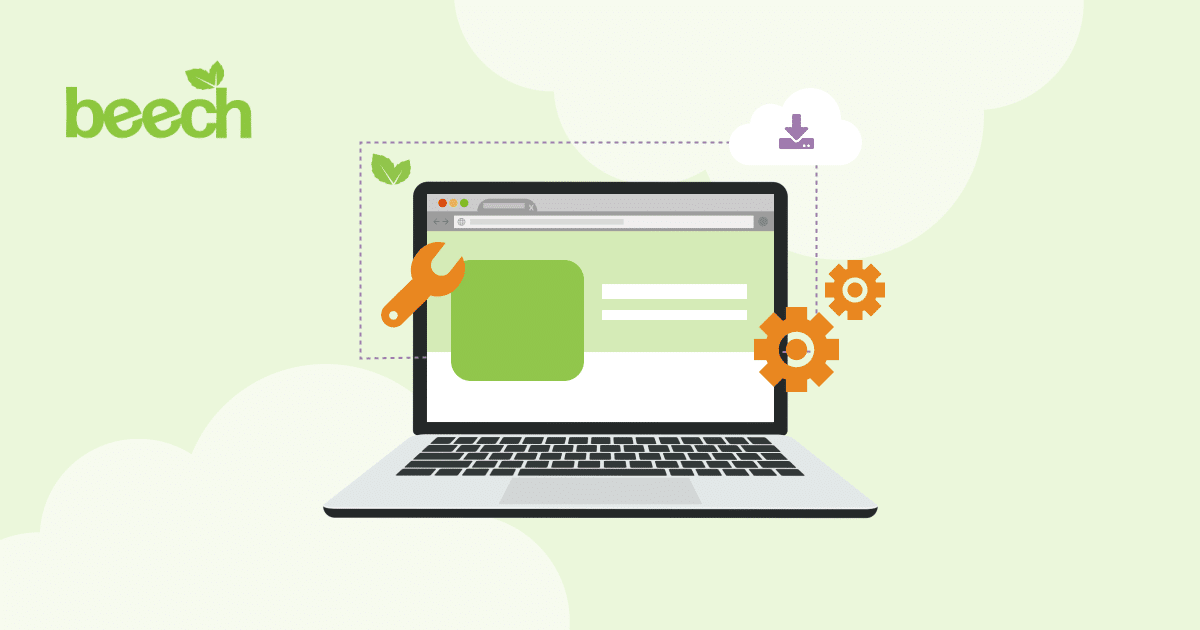Is your website’s carbon footprint undermining your sustainability efforts?
Here’s what’s covered in our latest blog post:
- How a website has a carbon footprint, and how an organisation’s online presence contributes to their carbon emissions
- Practical actionable steps to achieve a more sustainable website
- The future of sustainability in digital marketing and how we can stay ahead
- Discover your website’s carbon score
Website sustainability is a topic that’s making its way into the digital marketing industry. Industry leaders like Elementor, the WordPress page builder, we use in our website projects, stated in a recent article that sustainable website design is a trend that “aligns with increasing consumer demand for eco-conscious brands and ethical best practices”.
In this blog, we’re providing insight into what a website digital footprint looks like, and ways we can improve it to further reduce the digital marketing industry’s impact on the planet.
The hidden environmental costs of a website
Data is stored in a cloud, and not the fluffy kind.
Every website visit, email sent, and file stored in ‘cloud’ data centres contributes to our collective carbon footprint. In fact, many websites—with heavy images, autoplay videos, complex animations, and inefficient code—demand substantial server resources and therefore energy to load.
This digital activity comes with a very real environmental price tag. According to Green Intelligence, the internet currently produces approximately 3.7% of global carbon emissions, more than double that of the entire global aviation industry, a figure growing rapidly, and currently being accelerated by the continuous use of Artificial Intelligence (AI) in digital marketing.
When 175 websites are created every minute around the world, these activities all add up to a substantial impact on the planet. For organisations promoting sustainable values or commitments to the Environmental, Social, and Governance (ESG) framework, website efficiency isn’t just a technical consideration—it’s a vital part of a digital presence that represents core values.
And it can also be great for business…
Why a sustainable website benefits an organisation
Understanding how digital marketing activities contribute to a carbon footprint allows us to work towards reducing it, and dedicating resources to website sustainability also delivers multiple benefits:
- Improved User Experience (UX): Well-optimised websites load faster and provide smoother navigation, with more direct and informative content that makes for a better user experience.
- Faster Speeds and Higher Conversions: Google states that “53% of visits are likely to be abandoned if pages take longer than 3 seconds to load.” This means that the faster a website loads, the more likely it is to convert visitors.
- Better Search Rankings: It’s a well-known fact that Google is increasingly favouring faster, more efficient websites in search results, which means a sustainable website is more likely to rank higher than competitors in Google Search.
- Competitive Edge: As Accenture research shows, consumers are increasingly drawn to eco-friendly brands and products, meaning organisations have the opportunity to stand out from competition and create a sustainable website that generates conversions and supports the environment.
- Reduced Operational Costs: Efficient websites require less bandwidth and hosting resources, potentially lowering digital operational costs, and the amount of maintenance work needed to keep a website up and running
- Brand Alignment: For organisations with sustainability-focused values and commitments, a low-carbon website demonstrates authenticity to the brand and avoids greenwashing. It shows target audiences that an organisation isn’t only saying they’re sustainable, they’re taking action to commit to being sustainable online, as well as in other operations.
- Demonstrating Credentials: With the likes of hosting badges from Green Web Foundation, organisations are able to instantly prove they’re acting sustainably.
Creating a sustainable website
So now we know the benefits, now, how can a website be more sustainable?
Optimise website content and imagery
By regularly reviewing website content and removing outdated or irrelevant information, we not only provide visitors with accurate information and a better user experience, but also reduce server load, decrease the energy consumption of our website, and lower emissions per visit. This optimisation results in faster loading times and a more sustainable digital presence.
Tip: Conduct a quarterly audit of content and utilise Google Analytics 4 to identify and remove or update low-performing pages. Focus particularly on image-heavy pages that may be contributing disproportionately to the website’s carbon footprint.
Be selective with plugins
While plugins improve the functionality of a WordPress website and allow for a more bespoke and unique user experience, too many will significantly increase a website’s carbon footprint, adding unnecessary weight to pages. When selecting plugins, evaluate:
- Reliability and reputation. Is the plugin developer trustworthy? Read reviews of plugins from other developers to understand what you’re adding to the website, and any potential risks of doing so.
- Compatibility with the latest platform versions. Check if they’re up to date with WordPress software updates, and how often they’re updated by developers to reflect these changes.
- Quality of support and maintenance. Are the developers available to provide support for functionality or running problems with the plugins? How valuable is their support, for example, via an automated response or conversation directly with them?
- Code efficiency and impact on load times. Avoid plugins eating away at too many resources and focus on the ones that will utilise efficient coding that benefits a user experience, rather than negatively impacting it.
- Do you have multiple plugins doing the same thing? There should only be one plugin per job or feature on the website.
Tip: Check existing and active plugins monthly and remove any that aren’t providing significant value or could be replaced with lighter, more efficient alternatives.
How to choose green website hosting
Green website hosting means choosing a server that is powered using only renewable energy sources. Selecting sustainable hosting is one of the easiest and quickest ways to reduce a website’s environmental impact. Choose the right host by evaluating their energy efficiency, renewable resource usage, sustainable values and eco-practices.
Many renewable hosting providers offer competitive page speeds, and increased conversions for organisations using their services, as “consumers actively engage with companies that embed sustainability into their communications and sales.”.
Be aware that some hosts also achieve ‘reduced’ carbon emissions through a range of renewable energy and climate offset programs.
Tip: Look specifically for hosting providers powered by 100% renewable energy such as wind or solar power. You can use the Green Web Foundation to find a host that supports sustainable values and display these credentials on your website with an embedded badge, like the one on our website.
How to use more technical optimisation methods to make a website more sustainable
For those more technically focused, the following optimisation tips can dramatically reduce a website’s energy usage:
- Use efficient caching: Caching stores copies of website files, reducing server load and energy consumption for repeat visitors. Having it active is a good thing for reducing resource usage but be sure to review it regularly.
- Compress and properly size all images: Uncompressed images are often 10-20 times larger than necessary, using more bandwidth and energy. The image formats also impact their size on the website, for example WebP, .png and .jpeg.
- Reduce the content and structure of each page: Each element on a page requires energy to load it. Review the content used on the website, and if it can be reduced, or better structured for a more energy-efficient and targeted user experience.
- Enable lazy loading for images and videos: This technique postpones loading off-screen images until users scroll to them, reducing initial page load time and the overall energy required.
- Use an optimisation plugin: This will help to achieve the above techniques and can work automatically in the background, ensuring a more efficient website that requires less processing power and less energy.
Tip: Tools like Google’s PageSpeed Insights can identify specific technical optimisations for your website, prioritised by level of impact.
For more information on creating a sustainable website, read a previous blog post from our experts. If you need help with more technical elements of optimising a website, talk to a sustainable developer, like us.
What does the future of sustainable digital marketing look like?
Many organisations are actively working to reduce their environmental impact, and consumers are opting for eco-friendly choices in their shopping habits, selecting the eco-friendly options available. With these changes, it’s safe to say sustainability is not a passing trend—it’s set to become fundamental in effective digital marketing.
We anticipate the following sustainable changes to online practices:
- Most efficient data centres will be powered entirely by renewable energy
- Browser technologies that prioritise efficiency and reduced energy consumption
- Carbon-aware content delivery networks that route traffic based on the electricity grid’s cleanliness
- AI tools are designed to optimise code and content for minimal environmental impact
- Increased awareness of how digital emissions impact overall climate change, as online carbon equivalent emissions currently account for 2.5 times the amount emitted from the aviation industry
For organisations looking to build an effective presence online, choosing a digital partner with these environmental values will help ensure they have the best possible sustainable approach to their digital marketing.
Does your website cost the Earth? Find out now!
Website sustainability isn’t just about reducing environmental impact, and there are now many free tools available to allow organisations to measure website carbon emissions:
- Website Carbon Calculator: Provides a clear estimate of CO2e per page load
- Ecograder: Gives users a fully comprehensive sustainability score for their web page with recommendations
- Page Speed Insights: Google’s tool includes performance metrics directly relating to energy efficiency
- Green Web Foundation: Checks a website’s hosting provide against a lengthy directory or sustainable hosts, to find out if the host is powered using renewable energy.
Organisations being able to demonstrate their sustainable actions is becoming increasingly important to consumers, as more grow environmentally conscious in their purchasing decisions. If you’d like to display your green credentials on your website for visitors to see, speak to us today.
Take action today for your organisation and the planet
Measure your current website’s carbon footprint using the resources mentioned above and find out how much your website is contributing to your overall carbon emissions.
Then, use the strategies we’ve recommended to improve your website’s carbon footprint.
Need help? Partner with a digital marketing agency for further support and choose one that understands sustainability and can help your organisation achieve eco-friendly goals online.
The result will be a faster, more efficient website that boosts brand credibility, improves user experience, and genuinely reduces environmental impact, increasing the likelihood of conversions from online visitors with a greener mindset.
Our team specialises in designing and developing bespoke, high-performing, sustainable websites that align with organisational values. If you’d like our help with any of the above, get in touch with our team of experts today.

















